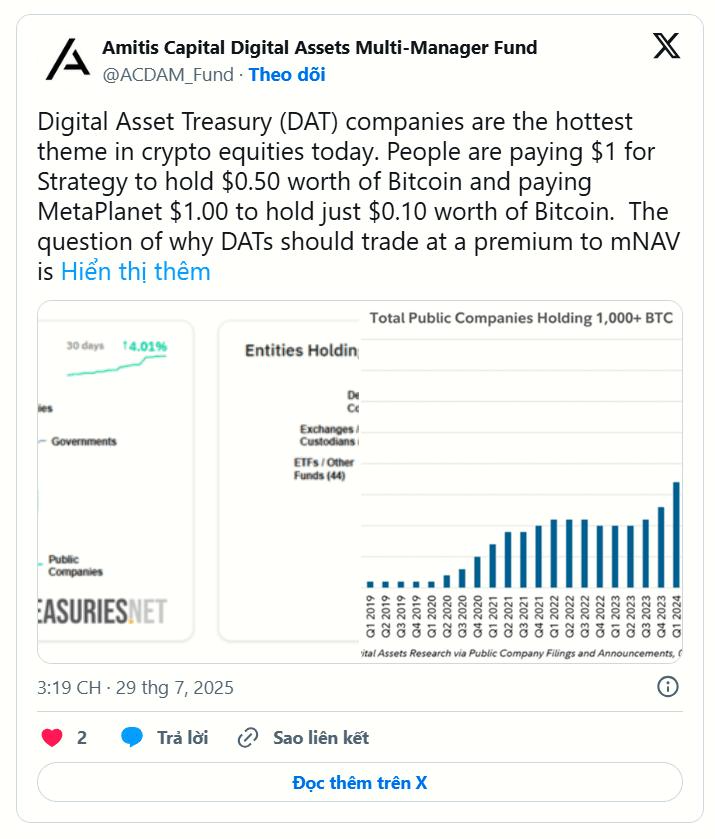The cryptocurrency market in 2025 is welcoming a new wave of optimism. Capital is flowing strongly into digital assets, thanks to reduced macroeconomic instability, inflows from institutions, and sustained demand for alternative value storage channels.
In this context, a new corporate strategy is emerging, with public companies viewing cryptocurrency holdings not as a speculative gamble but as a core balance sheet strategy.
Galaxy Research's latest report, 'The Rise of Digital Asset Fund Managers', shows that this phenomenon is no longer an isolated occurrence. In total, these digital asset fund management companies (DATCO) hold over $100 billion in Bitcoin, Ethereum, and other tokens, marking a structural shift in how corporations allocate capital.
Over $100 billion in the company's cryptocurrency reserves

According to reports, DATCO control about 791,662 BTC, worth approximately $93 billion, and 1.31 million ETH, worth about $4 billion. This holding represents nearly 4% of the Bitcoin supply and 1.1% of the Ethereum supply. This scale is comparable to some national reserves, indicating how deeply digital assets have penetrated corporate finance.
Bitcoin remains the dominant asset, but an increasing number of DATCO are expanding into Ethereum and other Layer 1 tokens. For treasuries with substantial Ether holdings, staking generates yields from idle assets, turning the company’s balance sheet into a tool for generating passive income.
Meanwhile, altcoin-based DATCO, such as SharpLink Gaming, BitMine, GameSquare, and others, are distinguishing themselves with treasury programs that generate profits far exceeding capital gains.
Strategic capital deployment
DATCO operates differently from passive investment vehicles like ETFs. Many funds raise capital through at-the-market (ATM) stock programs when their shares trade at higher than net asset value, allowing them to accumulate more cryptocurrency per dollar raised. Others utilize private placements, PIPE transactions, or SPAC mergers to accelerate their fundraising efforts.
Arbitrage activity in this capital market has proven to be highly profitable. Galaxy emphasizes that companies have generated unrealized profits of billions of dollars simply by scaling in favorable market conditions.
Expanding footprint and market impact
Although the United States remains the focal point of DATCO activity, this trend is spreading internationally. The extensive capital market access in the U.S. has allowed for rapid scaling, but global exchanges are now witnessing the emergence of similar corporate strategies. This expansion increases liquidity for digital assets and reinforces the link between stock valuations and cryptocurrency prices.
Risks and the path ahead
The DATCO model is not without its weaknesses. A sudden drop in stock premiums, unfavorable regulatory changes, or a frozen capital market could lead to forced asset sales. However, for now, their footprint outside large companies like MicroStrategy remains small compared to the $3.8 trillion cryptocurrency market.

Moreover, it is concerning that investors are paying significantly higher prices for the shares of these companies compared to the actual value of the Bitcoin they hold, sometimes double or even ten times. About 160 public companies currently hold nearly 1 million BTC, and 35 of these companies each own over $120 million. New DAT company offerings are emerging almost daily, further fueling the hype.
